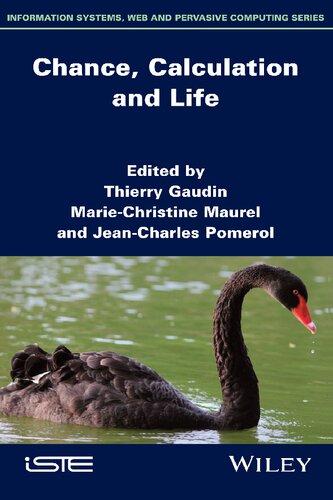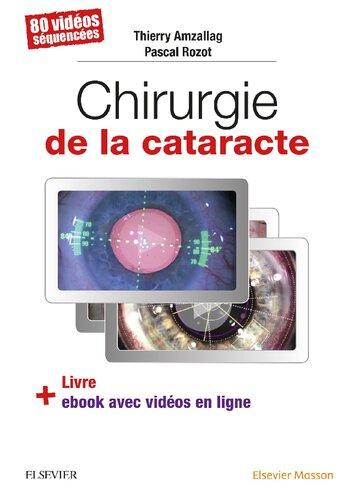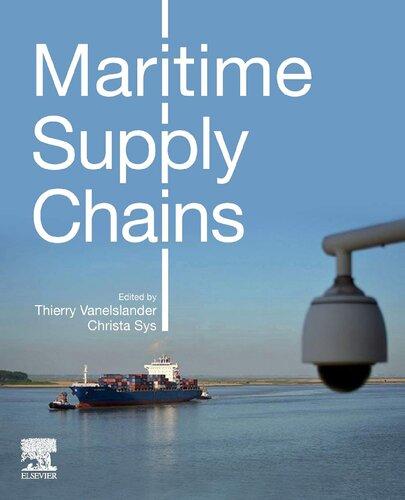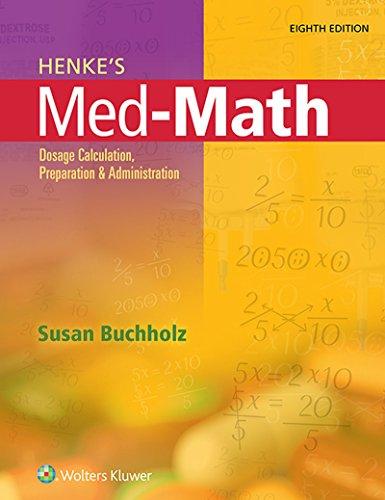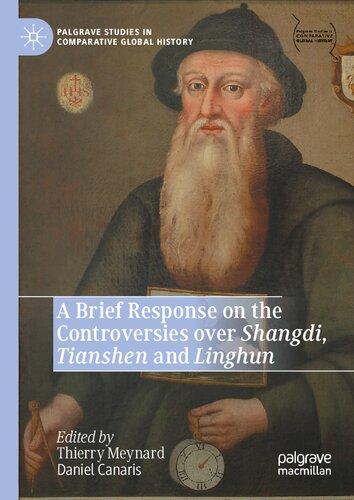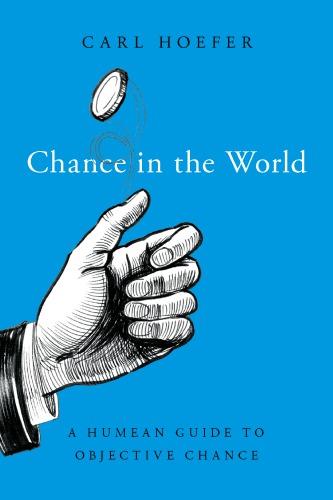Preface
CERISY
The Centre Culturel International de Cerisy proposes, each year from the end of May to early October and within the welcoming context of a 17th-century castle, a historic monument, meetings to bring together artists, researchers, teachers, students, social and economical actors, as well as the wider public interested in cultural and scientific exchanges.
A long cultural tradition
– Between 1910 and 1939, Paul Desjardins organized the famous “decades” in Pontigny abbey, to unite eminent personalities for debates on literary, social and political themes.
– In 1952, Anne Heurgon-Desjardins, while repairing the castle, created the Centre Culturel and continued, with her own personal touch, the work of her father.
– From 1977 to 2006, her daughters, Catherine Peyrou and Edith Heurgon, took the lead and brought a new dimension to the activities.
– Today, after the departure of Catherine and then of Jacques Peyrou, Cerisy continues under the management of Edith Heurgon and Dominique Peyrou, supported by Anne Peyrou-Bas and Christian Peyrou, also part of Cerisy castle’s Civil Society, as well as with the support of an efficient and dedicated team led by Philippe Kister.
A like-minded original project
– They receive, in a prestigious setting far removed from urban disturbances and for a relatively long time period, people who are animated by the same attraction for discussion, in order to, through communal contemplation, invent new ideas and weave lasting connections.
– The Civil Society graciously puts the premises at the disposal of the Association des Amis de Pontigny-Cerisy, with no lucrative purpose and recognized for its public interest, currently presided over by Jean-Baptiste de Foucauld, the inspector general of finances.
A regularly supported action
– The Centre Culturel, the main means of action of the Association, has organized nearly 750 symposiums broaching, through completely independent routes, the most diverse of themes. These symposiums have given rise, through various editors, to the publication of approximately 550 books
– The Centre National du Livre ensures continuous support to the organization and publication of the symposiums. The territorial collectivities (Normandy Region, department Council of the Manche, Coutances Mer and Bocage) and the regional directorate of cultural affairs bring their support to the Center, which also organizes, alongside the Universities of Caen and Rennes 2, encounters on themes concerning Normandy and the Great West.
– A Cercle des Partenaires, circle of partners, formed of enterprises, local collectives and public bodies, supports and even initiates prospective encounters on the main contemporary challenges
– Since 2012, a new modern and accessible conference room has allowed for a new formula: the “Entretiens de la Laiterie”, days for exchanges and debates, a collaborative effort from the partners of the Association.
Thierry GAUDIN
Marie-Christine MAUREL
Jean-Charles POMEROL January 2021
Information:
CCIC, Le Château, 50210 Cerisy-la-Salle, France
Tel.: + 33 (0) 2 33 46 91 66 website: www.ccic-cerisy.asso.fr
email: info.cerisy@ccic-cerisy.asso.fr
Introduction
During the Cerisy week that we organized in 2016, on the theme of Sciences de la vie, sciences de l’information (Gaudin et al. 2018; Life Sciences, Information Sciences), many questions were raised about the role of chance in the development and evolution of living beings. With the aim of further investigating this very specific question, that is, the role of chance in life, we once again invited eminent specialists in life, evolution, physics, probability and philosophy to Cerisy, during the week of August 29 to September 5, 2019.
This book is a collation of the main contributions presented on this occasion. In the first part, “Randomness in all of its Aspects”, we will try to identify the concept in its various avatars. This part begins with a presentation by Cristian S. Calude and Giuseppe Longo who distinguish, from a scientific and philosophical point of view, the three generally recognized types of chance: “Common, Biological and Quantum Randomness”. We can define common chance as either: the meeting of two independent chains of causality; or, as an event for which we ignore the causality or for a law which we know is very sensitive to small disturbances, disturbances which as Calude and Longo discuss, may in fact exist below the sensitivity threshold of our measuring instruments. This sensitivity to small initial disturbances leads to chaos in the mathematical sense of the term, and was illustrated at Cerisy by the screening of Etienne Ghys’s videos, as commented on by Grégory Miermont. For his part, Gilles Pagès presents the point of view of the probabilist, who does not acknowledge chance, only probabilities. He also reminds us of the importance of the Monte-Carlo method, which consists of the creation of randomness through computer simulations, and shows us that the process by which mathematiciancomputer scientists “draw random numbers” is not so simple. Pagès goes on to echo Paul Lévy’s declaration: “Nature ignores chance”. In a very enlightening
Introduction written by Thierry GAUDIN, Marie-Christine MAUREL and Jean-Charles POMEROL
talk on the historical and etymological origins of words, Clarisse Herrenschmidt checks this statement by reminding us that many languages have made an allocation for the concept of chance and have found words to express it.
Niels Bohr’s interpretation of quantum physics has continued to engage, even scientists, by introducing what seems to be an intrinsic probability. This helped to inspire an article by François Vannucci on wave-particle duality: quantum randomness but statistical determinism. Einstein never really accepted indeterminacy and we see that the challenge to “Bohrian” indeterminism continues; this was illustrated by a disturbing presentation by Stéphane Douady. This indeterminacy extends to astrophysics and the theory of multiple universes, as we will discover from the inspired pen of Michel Cassé.
Does chance govern our decisions? Mathias Pessiglione explains how and why the brain does not maximize an expected utility. Nonetheless, reflecting on this further, he explains the mechanism of random decision-making in the brain, thereby posing the question of free will. Chance as divine intervention, as has often been suggested, could be another name for the hand of God when he does not want to reveal himself. This naturally leads to philosophical and poetic reflections before moving on to the second part of this account, devoted to biology and evolution. We will therefore focus on the meaning of life as captured by the poetic intelligence of Georges Amar, on a meandering path from Hölderlin to William of Ockham and Spinoza, passing many poets, including Rimbaud, Baudelaire and many others. “Le hasard et le divin” (Chance and the Divine) is the apt title chosen by Bertrand Vergely to share with us his thoughts on randomness, necessity and inner life, culminating in a passage on chance and Grace. This first part will end with a semantic exploration of the words “chance” and “creation”, as guided by Ivan Magrin-Chagnolleau who defines himself as an “artist-researcher”. Beyond semantics, he invites us to reflect on the links between randomness and artistic creation. Randomness is the only source of creation in genetics, as per Jacques Monod’s vision. However, forms may require subjectivity to exist in order for them to work. This brings us to the tipping point, or kairos, alluded to by Bertrand Vergely, a moment in which the artist and the researcher has but a split second in which to grab it by the horns
In the second part, “Randomness, Biology and Evolution”, we begin with the topical subject of epigenetics, through a brilliant chapter by David Sitbon and Jonathan B. Weitzmann. The latter very clearly defines the pathways of randomness in sexual reproduction, in terms of the pairing of alleles and mutations. They also explain the role of chromatin in gene expression, and how the environment is involved in this epigenetic process. In a well-documented article, Bernard Dujon explains how genes are exchanged between neighboring species, or more distantly,
during a horizontal transfer. This process is well known in prokaryotes, in particular through the introduction of foreign DNA using retroviruses (a process used in gene therapy). In contrast, the extent of this phenomenon in multicellular eukaryotes is only just beginning to be understood. The acquisition of genes by horizontal transmission justifies the title: “Quand l’acquis devient héréditaire” (When Acquisition becomes Hereditary). The link between the environment and randomness becomes obvious when one considers that this horizontal acquisition results from encounters, of a random nature, within a given biotope (i.e. the role of environment).
From reproduction to evolution, it is but a step to join Philippe Grandcolas as he tries to show that evolution does not happen completely at random. Evolutionary pressure and the environment constrain evolution. Philippe Grandcolas discusses the significance of adaptive pressure and specific inheritance. By analyzing the notions of convergence and parallelism, as well as the presentation of some evolutionary experiments, Philippe Grandcolas qualifies Gould’s examination on the eventual “replay” of evolution.
With Amaury Lambert, we remain in the field of evolution and focus, more precisely, on the transition from genotype to phenotype in terms of the constraints of Waddington’s1 epigenetic landscape. After distinguishing between the different types of randomness in evolution, Lambert models how the phenotype can resist genetic hazards, thereby providing a precise meaning for the notion of “canalization” as introduced by Waddington. From this standpoint, it becomes normal to wonder whether the emergence of life is the result of random chance. Asking himself this question, Antonio Lazcano gives us a remarkably well-sourced contribution on the history of scientific ideas pertaining to the origins of life, which leads to the conclusion, already glimpsed by Mayr2, that biology cannot be reduced to physics and chemistry since “Nothing in biology makes sense, except in the light of evolution”3. Therefore, we can qualify biology as a “historical science”. Like history, evolution has its constraints and its own contingency, and therefore, very probably, random chance played a part in the emergence of life. Establishing this, however, brings about the question, is evolution naturally accompanied by an increase in complexity and an increase in biodiversity?
This question is asked by Jean-Paul Delahaye. To try and give a precise meaning to this question, Jean-Paul Delahaye reminds us of the notions of Kolmogorov computational complexity and Benett structural complexity4. Like the Universe,
1 See the Waddington landscape images and references in Amaury Lambert’s article.
2 See the reference in the article by Antonio Lazcano.
3 Quote from Théodore Dobjansky: American Biology Teacher, 35, 125–129, 1973.
4 See references in the article by Jean-Paul Delahaye.
which tends to become increasingly complex in the sense of Benett, Jean-Paul Delahaye hypothesizes that evolution is likewise a process that tends toward complexification, one that sometimes backtracks on itself with the result of it being erased. The growing complexity of living things is reflected upon in terms of biodiversity. There seems to be a certain human attraction to complexity, in particular by living organisms, a tropism that opens the door for a discussion on the ethics of organized complexity and it is along this line of questioning that Jean-Paul Delahaye, by way of recommendation, brings about his conclusion.
The purpose of this introduction is to give a brief overview on the richness of this work. From mathematics to the humanities, by way of biology, there are many questions and concepts linked to randomness to uncover. The contributions gathered here have the advantage of presenting the latest scientific results in a synthesized form, and with an abundant bibliography, that will serve both researchers and doctoral students. Yes, randomness is a part of life, evolution and reproduction, but always under certain constraints; importantly, according to the vision of quantum physics, individual randomness does not deter statistical determinism. This is a vast subject for multidisciplinary reflection that speaks to the irreducible individuation of man in a Universe that is increasingly explained and statistically deterministic.
Acknowledgments
This week could not have happened without the understanding of the many working colleagues and their laboratories, who carried some of the cost. We would like to thank EDF Île-de-France for the support given to the association of friends of Cerisy-Pontigny, which made it possible to organize this meeting. In addition, the CNRS institutes (INEE, INSB, INSMI, IN2P3) have also made their contribution. Finally, we would like to thank ISTE,who took over part of the editing, in particular, the English edition.
In memoriam
For two years, Dominique Lacroix helped us with the preparations for this conference, which blossomed from the one held in 2016. She unfortunately left us in June of 2019 and as such, was unable to meet with the speakers whom she knew. She would have been very happy to meet them again; however, the chance that is inherent to life decided otherwise. It is with great sadness that we dedicate this book to her.
Reference
Gaudin, T., Lacroix, D., Maurel, M.-C., Pomerol, J.-C. (eds) (2018). Life Sciences, Information Sciences. ISTE Ltd, London, and John Wiley & Sons, New York.
Classical, Quantum and Biological Randomness as Relative Unpredictability
We propose the thesis that randomness is unpredictability with respect to an intended theory and measurement. From this point of view, we briefly discuss various forms of randomness that physics, mathematics and computer science have proposed. Computer science allows us to discuss unpredictability in an abstract, yet very expressive way, which yields useful hierarchies of randomness and may help to relate its various forms in natural sciences. Finally, we discuss biological randomness – its peculiar nature and role in ontogenesis and in evolutionary dynamics (phylogenesis). Randomness in biology is positive as it contributes to organisms’ and populations’ structural stability by adaptation and diversity.
1.1. Introduction
Randomness is everywhere, for better or for worse: vagaries of weather, day-today fluctuations in the stock market, random motions of molecules or random genetic mutations are just a few examples. Random numbers have been used for more than 4,000 years, but they have never been in such high demand than they have in our time. What is the origin of randomness in nature and how does it relate to the only access we have to phenomena, that is, through measurement? How does randomness in nature relate to randomness in sequences of numbers? The theoretical and mathematical analysis of randomness is far from obvious. Moreover, as we will show, it depends on (and is relative to) the particular theory that is being worked on, the intended theoretical framework for the phenomena under investigation.
Chapter written by Cristian S. CALUDE and Giuseppe LONGO
1.1.1. Brief historical overview
Democritus (460–370 BCE) determined the causes of things to necessity and chance alike, justifying, for example, the fact that atoms’ disorderly motion can produce an orderly cosmos. However, the first philosopher to think about randomness was most likely Epicurus (341–270 BCE), who argued that “randomness is objective, it is the proper nature of events”.
For centuries, though, randomness has only been mathematically analyzed in games and gambling. Luca Pacioli (in Summa de aritmetica, geometria, proporzioni et proporzionalita, 1494) studied how stakes had to be divided among gamblers, particularly in the difficult case when the game stops before the end. It is worth noting that Pacioli, a top Renaissance mathematician, also invented modern bookkeeping techniques (Double Entry): human activities, from gambling to financial investments, were considered as the locus for chance. As a matter of fact, early Renaissance Florence was the place of the invention of banks, paper currency and (risky) financial investments and loans1.
Cardano (in De Ludo Aleae (The Game of Dice), 1525) developed Pacioli’s analysis further. His book was only published in 1663, so Fermat and Pascal independently and more rigorously rediscovered the “laws of chance” for interrupted games in a famous exchange of letters in 1654. Pascal clarified the independence of history in the games of chance, against common sense: dice do not remember the previous drawings. Probabilities were generally considered as a tool for facing the lack of knowledge in human activities: in contrast to God, we cannot predict the future nor master the consequences of our (risky) actions. For the thinkers of the scientific revolution, randomness is not in nature, which is a perfect “Cartesian Mechanism”: science is meant to discover the gears of its wonderful and exact mechanics. At most, as suggested by Spinoza, two independent, well-determined trajectories may meet (a walking man and a falling tile) and produce a random event. This may be considered a weak form of “epistemic” randomness, as the union of the two systems, if known, may yield a well-determined and predictable system and encounter.
Galileo, while still studying randomness, but only for dice (Sopra le scoperte de i dadi, 1612), was the first to relate measurement and probabilities (1632). For him, in physical measurement, errors are unavoidable, yet small errors are the most probable. Moreover, errors distribute symmetrically around the mean value, whose reliability increases with the number of measurements.
1 Such as the loan, in 1332, to the King of Britain Edward III who never returned it to the Bank of Bardi and Peruzzi – as all high school kids in Italy and our colleague Alberto Peruzzi in Florence know very well.
Almost two centuries later, Laplace brought Pascal’s early insights to the modern rigor of probability theory (1998). He stressed the role of limited knowledge of phenomena in making predictions by equations: only a daemon with complete knowledge of all the forces in the Universe could “embrace in a single formula the movements of the greatest bodies of the universe and those of the tiniest atom; for such an intellect nothing would be uncertain and the future just like the past would be present before its eyes”. The connection between incomplete knowledge of natural phenomena and randomness is made, yet no analysis of the possible “reasons” for randomness is proposed: probability theory gives a formal calculus of randomness, with no commitment on the nature of randomness. Defining randomness proved to be a hugely difficult problem which has only received acceptable answers in the last 100 years or so.
1.1.2. Preliminary remarks
Randomness is a tricky concept which can come in many flavors (Downey and Hirschfeldt 2010). Informally, randomness means unpredictability, with a lack of patterns or correlations. Why is randomness so difficult to understand and model? An intuitive understanding comes from the myriad of misconceptions and logical fallacies related to randomness, like the gambler’s fallacy. In spite of the work of mathematicians since the Renaissance, there is the belief that after a coin has landed on tails 10 consecutive times, there are more chances that the coin will land on heads on the next flip. Similarly, common sense argues that there are “due” numbers in the lottery (since all numbers eventually appear, those that have not come up yet are “due”, and thus more likely to come up soon). Each proposed definition of randomness seems to be doomed to be falsified by some more or less clever counter-example.
Even intuitively, the quality of randomness varies: tossing a coin may seem to produce a sequence of zeroes and ones which is less random than the randomness produced by Brownian motion. This is one of the reasons why users of randomness, like casinos, lotteries, polling firms, elections and clinical evaluations, are hard pressed to “prove” that their choices are “really” random. A new challenge is emerging, namely, to “prove randomness”.
For physical systems, the randomness of a process needs to be differentiated from that of its outcome. Random (stochastic) processes have been extensively studied in probability theory, ergodic theory and information theory. Process or genesis randomness refers to such processes. On one hand, a “random” sequence does not necessarily need to be the output of a random process (e.g. a mathematically defined “random” sequence) and, conversely, a random process (e.g. a quantum random generator) is expected, but not guaranteed, to produce a “random output”.
Outcome (or product) randomness provides a prima facie reason for the randomness of the process generating that outcome (Eagle 2005, p. 762), but, as argued in Frigg (2004, p. 431), process and outcome randomness are not extensionally equivalent. Process randomness has no mathematical formalization and can only be accessed/validated with theory or output randomness.
Measurement is a constant underlying issue: we may only associate a number with a “natural” process, by measurement. Most of the time we actually associate an interval (an approximation), an integer or a rational number as a form of counting or drawing.
Let us finally emphasize that, in spite of the existing theoretical differences in the understanding of randomness, our approach unifies the various forms of randomness in a relativized perspective:
Randomness is unpredictability with respect to the intended theory and measurement.
We will move along this epistemological stand that will allow us to discuss and compare randomness in different theoretical contexts.
1.2. Randomness in classical dynamics
A major contribution to the contemporary understanding of randomness was given by Poincaré. By his “negative result” (his words) on the Three Body Problem (1892, relatively simple deterministic dynamics, see below), he proved that minor fluctuations or perturbations below the best possible measurement may manifest in a measurable, yet unpredictable consequence: “we then have a random phenomenon” (Poincaré 1902). This started the analysis of deterministic chaos, as his description of the phase-space trajectory derived from a nonlinear system is the first description of chaotic dynamics (Bros and Iagolnitzer 1973).
Poincaré’s analysis is grounded in a mathematical “tour de force”. He proved the non-analyticity of the (apparently) simple system of nonlinear equations describing two planets and a Sun in their gravitational fields (three bodies). The planets disturb each other’s trajectories and this gives the formal divergence of the Lindstedt-Fourier series meant to give a linear approximation of the solution of the equations. More precisely, by using his notions of bifurcations and homoclinic orbit (the intersection of a stable and an unstable manifold), he showed that the “small divisors”, which make the series diverge, physically mean that an undetectable fluctuation or perturbation may be amplified to a measurable quantity by the choice of a branch, or another in a bifurcation, or a manifold along a homoclinic orbit. It is
often difficult to give a physical meaning to the solution of a system of equations; it is particularly hard and inventive to make sense of the absence of a solution. Yet, this made us understand randomness as deterministic unpredictability and non-analyticity as a strong form of classical unpredictability2.
In this classical framework, a random event has a cause, yet this cause is below measurement. Thus, Curie’s principle3 is preserved: “the asymmetries of the consequences are already present in the causes” or “symmetries are preserved” – the asymmetries in the causes are just hidden.
For decades, Poincaré’s approach was quoted and developed by only a few, that is, until Kolmogorov’s work in the late 1950s and Lorentz in the 1960s. Turing is one of these few: he based his seminal paper on morphogenesis (Turing 1952) on the nonlinear dynamics of forms generated by chemical reactants. His “action/reaction/diffusion system” produced different forms by spontaneous symmetry breaking. An early hint of these ideas is given by him in Turing (1950, p. 440): “The displacement of a single electron by a billionth of a centimetre at one moment might make the difference between a man being killed by an avalanche a year later, or escaping”. This Poincarian remark by Turing preceded by the famous “Lorentz butterfly effect” (proposed in 1972) by 20 years on the grounds of Lorentz’s work from 1961.
Once more, many like to call this form of classical randomness “epistemic” unpredictability, that is related to our knowledge of the world. We do not deal with ontologies here, although this name may be fair, with the distinction from the understanding of randomness as a very weak form of unpredictability proposed by Spinoza. Poincaré brought a fact known since Galileo into the limelight: classical measurement is an interval, by principle4. Measurement is the only form of access we have to the physical world, while no principle forbids, a priori, to join two independent Spinozian dynamics. That is, even epistemic, classical physics posits
2 The non-analyticity is stronger than the presence of positive Lyapunov exponents for a nonlinear function. These exponents can appear in the solution of a nonlinear system or directly in a function describing a dynamic. They quantify how a minor difference in initial conditions can be magnified along a trajectory. In this case, we can have a form of “controlled” randomness because the divergence of the trajectories starting within the same best measurement interval will never exceed a pre-assumed, exponentially increasing value. In the absence of (analytical) solutions, bifurcations and homoclinic orbits can lead to sudden and “uncontrolled” divergence.
3 A macroscopic cause cannot have more elements of symmetry than the effects it produces. Its informational equivalent, called data processing inequality, asserts that no manipulation of information can improve the conclusions drawn from such data (Cover and Thomas 1991).
4 Laplace was also aware of this, but Lagrange, Laplace and Fourier firmly believed that any system of Cauchy equations possessed a linear approximation (Marinucci 2011).
this limit to access and knowledge as a priori measurement. Then this lack of complete knowledge yields classical randomness, typically in relation to a nonlinear mathematical modeling, which produces either positive Lyapunov exponents or, more strongly, non-analyticity. In other words, classical systems (as well as relativistic ones) are deterministic, yet they may be unpredictable, in the sense that randomness is not in the world nor it is just in the eyes of the beholder, but it pops out at the interface between us and the world by theory and measurement
By “theory” we mean the equational or functional determination, possibly by a nonlinear system of equations or evolution functions.
1.3. Quantum randomness
Quantum randomness is hailed to be more than “epistemic”, that is, “intrinsic” (to the theory). However, quantum randomness is not part of the standard mathematical model of the quantum which talks about probabilities, but is about the measurement of individual observables. So, to give more sense to the first statement we need to answer (at least) the following questions: (1) What is the source of quantum randomness? (2) What is the quality of quantum randomness? (3) Is quantum randomness different from classical randomness?
A naive answer to (1) is to say that quantum mechanics has shown “without doubt” that microscopic phenomena are intrinsically random. For example, we cannot predict with certainty how long it will take for a single unstable atom in a controlled environment to decay, even if one has complete knowledge of the “laws of physics” and the atom’s initial conditions. One can only calculate the probability of decay in a given time, nothing more! This is intrinsic randomness guaranteed.
But is it? What is the cause of the above quantum mechanical effect? One way to answer is to consider a more fundamental quantum phenomenon: quantum indeterminism. What is quantum indeterminism and where does it come from? Quantum indeterminism appears in the measurement of individual observables: it has been at the heart of quantum mechanics since Born postulated that the modulus-squared of the wave function should be interpreted as a probability density that, unlike in classical statistical physics (Myrvold 2011), expresses fundamental, irreducible indeterminism (Born 1926). For example, the measurement of the spin, “up or down”, of an electron, in the standard interpretation of the theory, is considered to be pure contingency, a symmetry breaking with no antecedent, in contrast to
the causal understanding of Curie’s principle5. The nature of individual measurement outcomes in quantum mechanics was, for a period, a subject of much debate. Einstein famously dissented, stating his belief that “He does not throw dice” (Born 1969, p. 204). Over time the assumption that measurement outcomes are fundamentally indeterministic became a postulate of the quantum orthodoxy (Zeilinger 2005). Of course, this view is not unanimously accepted (see Laloë 2012).
Following Einstein’s approach (Einstein et al. 1935), quantum indeterminism corresponds to the absence of physical reality, if reality is what is made accessible by measurement: if no unique element of physical reality corresponding to a particular physical observable (thus, measurable) quantity exists, this is reflected by the physical quantity being indeterminate. This approach needs to be more precisely formalized. The notion of value indefiniteness, as it appears in the theorems of Bell (Bell 1966) and, particularly, Kochen and Specker (1967), has been used as a formal model of quantum indeterminism (Abbott et al. 2012). The model also has empirical support as these theorems have been experimentally tested via the violation of various inequalities (Weihs et al. 1998). We have to be aware that, going along this path, the “belief” in quantum indeterminism rests on the assumptions used by these theorems.
An observable is value definite for a given quantum system in a particular state if the measurement of that observable is pre-determined to take a (potentially hidden) value. If no such pre-determined value exists, the observable is value indefinite. Formally, this notion can be represented by a (partial) value assignment function (see Abbott et al. (2012) for the complete formalism).
When should we conclude that a physical quantity is value definite? Einstein, Podolsky and Rosen (EPR) defined physical reality in terms of certainty of predictability in Einstein et al. (1935, p. 777):
If, without in any way disturbing a system, we can predict with certainty (i.e., with probability equal to unity) the value of a physical quantity, then there exists an element of reality corresponding to that quantity.
Note that both allusions to “disturbance” and to the (numerical) value of a physical quantity refer to measurement as the only form of access to reality we have. Thus, based on this accepted notion of an element of physical reality,
5 A correlation between random events and symmetry breakings is discussed in Longo et al. (2015). In this case, measurement produces a value (up or down), which breaks the in-determined or in-differentiated (thus, symmetric) situation before measurement.
following (Abbott et al. 2012) we answer the above question by identifying the EPR notion of an “element of physical reality” with “value definiteness”:
EPR principle: If, without disturbing a system in any way, we can predict with certainty the value of a physical quantity, then there exists a definite value prior to the observation corresponding to this physical quantity.
The EPR principle justifies:
Eigenstate principle: a projection observable corresponding to the preparation basis of a quantum state is value definite
The requirement called admissibility is used to avoid outcomes that are impossible to obtain according to quantum predictions, but which have overwhelming experimental confirmation:
Admissibility principle: definite values must not contradict the statistical quantum predictions for compatible observables of a single quantum.
Non-contextuality principle: the measurement results (when value definite) do not depend on any other compatible observable (i.e. simultaneously observable), which can be measured in parallel with the value definite observable.
The Kochen-Specker Theorem (Kochen and Specker 1967) states that no value assignment function can consistently make all observable values definite while maintaining the requirement that the values are assigned non-contextually. This is a global property: non-contextuality is incompatible with all observables being value definite. However, it is possible to localize value indefiniteness by proving that even the existence of two non-compatible value definite observables is in contradiction with admissibility and non-contextually, without requiring that all observables be value definite. As a consequence, we obtain the following “formal identification” of a value indefinite observable:
Any mismatch between preparation and measurement context leads to the measurement of a value indefinite observable.
This fact is stated formally in the following two theorems. As usual we denote the set of complex numbers by ℂ and vectors in the Hilbert space ℂn by ǀ.>; the projection onto the linear subspace spanned by a non-zero vector ǀφ> is denoted by Pφ. For more details see Laloë (2012).
THEOREM 1.1.– Consider a quantum system prepared in the state ǀψ> in dimension n ≥ 3 Hilbert space ℂn, and let ǀφ> in any state neither parallel nor orthogonal to ǀψ>. Then the observable projection Pφ is value indefinite under any non-contextual, admissible value assignment.
Hence, accepting that definite values exist for certain observables (the eigenstate principle) and behave non-contextually (non-contextuality principle) is enough to locate and derive, rather than postulate, quantum value indefiniteness. In fact, value indefinite observables are far from being scarce (Abbott et al. 2014b).
THEOREM 1.2.– Assume the eigenstate principle, non-contextuality and admissibility principles. Then, the (Lebesgue) probability that an arbitrary value indefinite observable is 1.
Theorem 1.2 says that all value definite observables can be located in a small set of probability zero. Consequently, value definite observables are not the norm, they are the exception, a long time held intuition in quantum mechanics.
The above analysis not only offers an answer to question (1) from the beginning of this section, but also indicates a procedure to generate a form of quantum random bits (Calude and Svozil 2008; Abbott et al. 2012, 2014a): to locate and measure a value indefinite observable. Quantum random number generators based on Theorem 1.1 were proposed in (Abbott et al. 2012, 2014a). Of course, other possible sources of quantum randomness may be identified, so we are naturally led to question (2): what is the quality of quantum randomness certified by Theorem 1.1, and, if other forms of quantum randomness exist, what qualities do they have?
To this aim we are going to look, in more detail, at the unpredictability of quantum randomness certified by Theorem 1.1. We will start by describing a non-probabilistic model of prediction – proposed in (Abbott et al. 2015b) – for a hypothetical experiment E specified effectively by an experimenter6
The model uses the following key elements:
1) The specification of an experiment E for which the outcome must be predicted.
2) A predicting agent or “predictor”, which must predict the outcome of the experiment.
6 The model does not assess the ability to make statistical predictions – as probabilistic models might – but rather the ability to predict precise measurement outcomes.
3) An extractor ξ is a physical device that the predictor uses to (uniformly) extract information pertinent to prediction that may be outside the scope of the experimental specification E. This could be, for example, the time, measurement of some parameter, iteration of the experiment, etc.
4) The uniform, algorithmic repetition of the experiment E
In this model, a predictor is an effective (i.e. computational) method to uniformly predict the outcome of an experiment using finite information extracted (again, uniformly) from the experimental conditions along with the specification of the experiment, but independent from the results of the experiments. A predictor depends on an axiomatic, formalized theory, which allows the prediction to be made, i.e. to compute the “future”. An experiment is predictable if any potential sequence of repetitions (of unbounded, but finite, length) can always be predicted correctly by such a predictor. To avoid prediction being successful just by chance, we require that the correct predictor – which can return a prediction or abstain (prediction withheld) – never makes a wrong prediction, no matter how many times it is required to make a new prediction (by repeating the experiment) and cannot abstain from making predictions indefinitely, i.e. the number of correct predictions can be made arbitrarily large by repeating the experiment enough times.
We consider a finitely specified physical experiment E producing a single bit x ∈ {0,1}. Such an experiment could, for example, be the measurement of a photon’s polarization after it has passed through a 50:50 polarizing beam splitter, or simply the toss of a physical coin with initial conditions and experimental parameters specified finitely.
A particular trial of E is associated with the parameter λ, which fully describes the “state of the universe” in which the trial is run. This parameter is “an infinite quantity” – for example, an infinite sequence or a real number – structured in a way dependent on the intended theory. The result below, though, is independent of the theory. While λ is not in its entirety an obtainable quantity, it contains any information that may be pertinent to prediction. Any predictor can have practical access to a finite amount of this information. We can view a resource as one that can extract finite information, in order to predict the outcome of the experiment E.
An extractor is a physical device selecting a finite amount of information included in λ without altering the experiment E. It can be used by a predicting agent to examine the experiment and make predictions when the experiment is performed with parameter λ. So, the extractor produces a finite string of bits ξ (λ). For example, ξ (λ) may be an encoding of the result of the previous instantiation of E, or the time of day the experiment is performed.
A predictor for E is an algorithm (computable function) PE which halts on every input and outputs either 0, 1 (cases in which PE has made a prediction), or “prediction withheld”. We interpret the last form of output as a refrain from making a prediction. The predictor PE can utilize, as input, the information ξ (λ) selected by an extractor encoding relevant information for a particular instantiation of E, but must not disturb or interact with E in any way; that is, it must be passive
A predictor PE provides a correct prediction using the extractor ξ for an instantiation of E with parameter λ if, when taking as input ξ (λ), it outputs 0 or 1 (i.e. it does not refrain from making a prediction) and this output is equal to x, the result of the experiment.
Let us fix an extractor ξ. The predictor PE is k-correct for ξ if there exists an n ≥ k, such that when E is repeated n times with associated parameters λ1, …, λn producing the outputs x1, x2, …, xn, PE outputs the sequence (ξ (λ1)), PE (ξ (λ2)), …, PE (ξ (λn)) with the following two properties:
1) no prediction in the sequence is incorrect, and
2) in the sequence, there are k correct predictions.
The repetition of E must follow an algorithmic procedure for resetting and repeating the experiment; generally, this will consist of a succession of events, with the procedure being “prepared, performed, the result (if any) recorded and E being reset”.
The definition above captures the need to avoid correct predictions by chance by forcing more and more trials and predictions. If PE is k-correct for ξ, then the probability that such a correct sequence would be produced by chance �� �� ×3 is bounded by ; hence, it tends to zero when k goes to infinity.
The confidence we have in a k-correct predictor increases as k approaches infinity. If PE is k-correct for ξ for all k, then PE never makes an incorrect prediction and the number of correct predictions can be made arbitrarily large by repeating E enough times. In this case, we simply say that PE is correct for ξ. The infinity used in the above definition is potential, not actual: its role is to arbitrarily guarantee many correct predictions.
This definition of correctness allows PE to refrain from predicting when it is unable to. A predictor PE which is correct for ξ is, when using the extracted information ξ (λ), guaranteed to always be capable of providing more correct predictions for E, so it will not output “prediction withheld” indefinitely. Furthermore, although PE is technically only used a finite, but arbitrarily large, number of times, the definition guarantees that, in the hypothetical scenario where it
